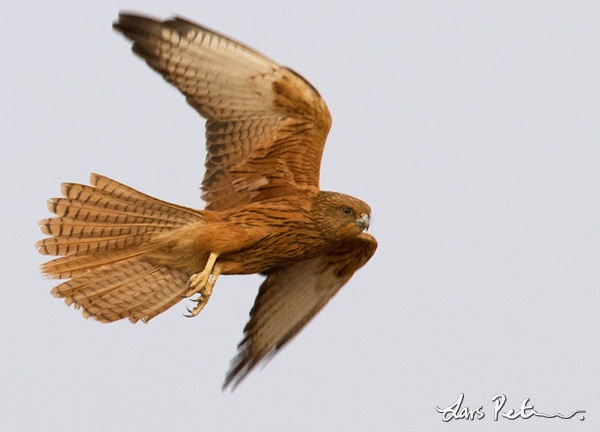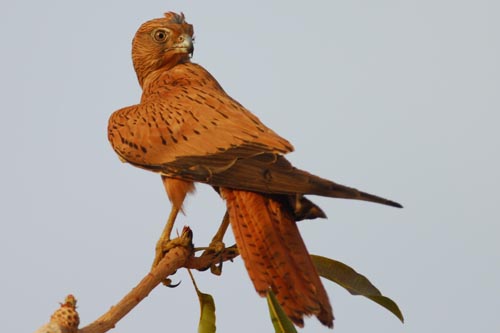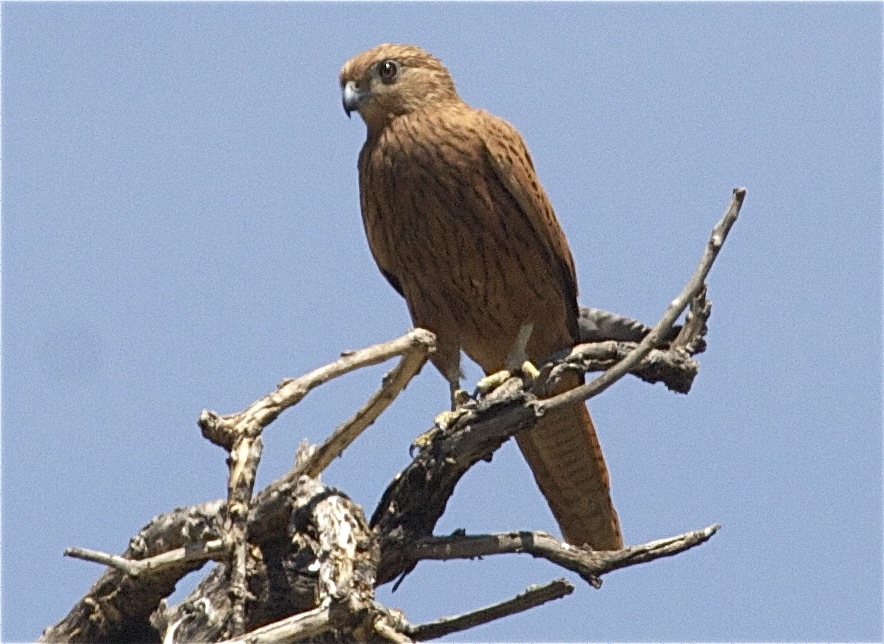
Falco alopex
SUBFAMILY
Falconinae
TAXONOMY
Tinnunculus alopex Heuglin, 1861, Gallabat, Sudan. Monotypic.
OTHER COMMON NAMES
French: Crйcerelle renard; German: Fuchsfalke; Spanish:
Cernнcalo Zorruno.
PHYSICAL CHARACTERISTICS
13.8–15.4 in (35–39 cm); 8.8–10.6 oz (250–300 g). A large
deep-chestnut kestrel with long broad wings and long tail.
Chestnut all over, streaked with black. Juveniles are more
heavily marked. Unlike most kestrels, sexes indistinguishable
by color but female larger than male.
DISTRIBUTION
Central Africa: from Senegambia east to Red Sea, Ethiopia, south
to northeast Zaire, northwest Kenya, and northeast Uganda.
HABITAT
Cliffs, rocky outcrops, and hills adjoining open arid savanna.
BEHAVIOR
Moves south from more arid parts of range in dry season
(October to March) to attend bush fires; with rains, returns
north to nest. Elsewhere appears sedentary.
FEEDING ECOLOGY AND DIET
Hunts large insects, small mammals and birds, and lizards.
Drops onto prey from perch or from hover, or snatches from
the air in direct flight (termites). Said to remain on the wing
for long periods. Follows fires to catch animals flushed by the
flames.
REPRODUCTIVE BIOLOGY
Nests semicolonially, 20–25 pairs in proximity on a rock face.
Lays about March to May in a shallow scrape on a ledge.
Clutch size two or three.
CONSERVATION STATUS
Not threatened. Species little known but thought to be secure.
Human exploitation and savanna degradation may be a
threat.
SIGNIFICANCE TO HUMANS
None known.
Other popular Animals
Photo Gallery of - Fox kestrel




 Animalia Life
Animalia Life